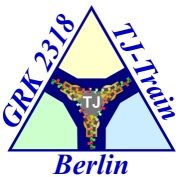
DFG Research Training Group "TJ-Train" (GRK 2318/2) Project
B4
Prof. Dr. Kai Schmidt-Ott1
1Department of Nephrology and Hypertension, Medizinische Hochschule Hannover 2Clinical Physiology / Nutritional Medicine, Campus Benjamin Franklin, Charité - Universitätsmedizin Berlin Transcriptional integration of tight junction biogenesis in kidney
PhD project: In this project we aim to comprehensively assess the molecular composition of epithelial barriers within cell types of the kidney using systems biology approaches. The goal will be to produce an atlas of tight junction component-encoding gene expression in the healthy and diseased kidney and to elucidate transcriptional networks associated with their gene expression control.The project will focus on integration of multi-omics technologies, including single cell transcriptomics and spatially resolved transcriptomics, followed by focused validation experiments. A strong focus will be placed on bioinformatic integration of systems data. The successful candidate will work in an interdisciplinary environment including biologists, computer scientists, mathematicians and clinicians. Initial tasks will include setting up, applying and developing bioinformatics platforms and computational pipelines for the analysis of single cell and spatial transcriptomics and integrated downstream analyses. The successful candidate will interact within a multidisciplinary environment of biologists, clinicians, computational scientists within the graduate school "TJ-Train" at Charité – Universitätsmedizin Berlin and at the Max-Delbrück Center for Molecular Medicine. Requirements: Profound background in molecular biology, strong interest in computational data analysis, basic skills in programming (especially the R programming language and in scripting languages such as Perl/Python) are a plus.3rd cohort PhD doctoral student
2nd cohort PhD doctoral student 1st cohort PhD doctoral student Janna Leiz
Leiz J, Schmidt-Ott K (2020) Claudins in the renal collecting duct. Int. J. Mol. Sci. 21(1): 221 (11 pages) (Review) [PubMed] [WebPage] [PDF] (IF 5.9) 1st cohort MD doctoral student
Project-related publications
|